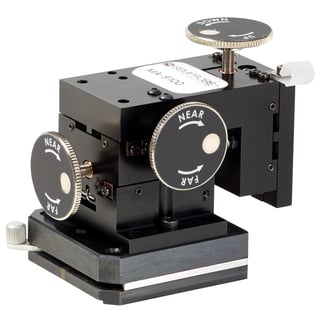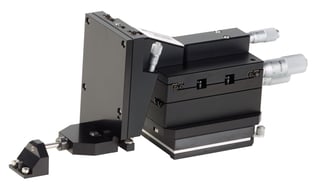
Micro Positioners, also referred to as manipulators or micropositioners, are the devices on a probe station that allow the operator to accurately position probes on the surface of a die. Micro Positioners have a probe arm attached to them with a probe needle at the end of it. By moving the micro positioner in X, Y, and Z, the operator can place the probe needle exactly where it is needed on the die.
Generally, micro positioners are moved into position by hand and then secured using a magnetic base or a vacuum base. From this secured position, the needle is guided into its final place using the fine movements on the micro positioner. A microscope is typically used to facilitate this alignment process, which can allow a probe needle to touch down on a pad as small as 1 micron.
Micro Positioners are available in different sizes. Smaller micro positioners work well for simple DC measurements. As the frequencies get higher, the cables and waveguides required get heavier, and larger, a more robust micro positioner is required. A user should pay attention to the fineness of the adjusting screws. Finer threads allow for more precise positioning, however making the adjustments takes longer.
For additional information, please request a discovery call or check out are other blog posts.





